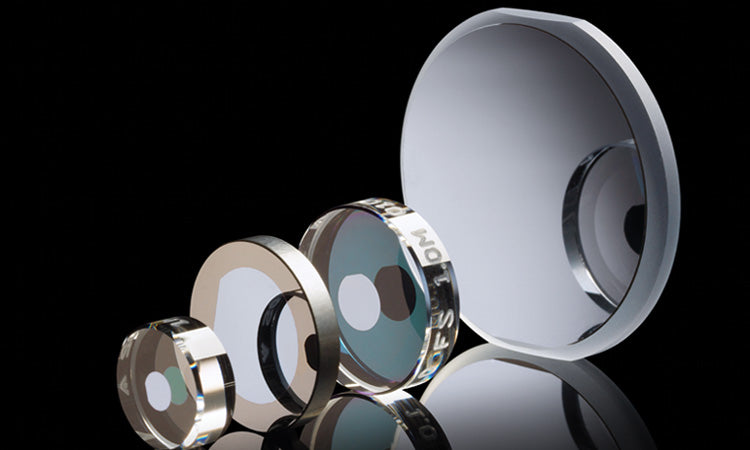
What Makes SiC-on-Insulator and Other Substrates Crucial for Next-Gen Electronics?
Share
According to the report by Next Move Strategy Consulting, the global SiC-On-Insulator and Other Substrates Market size is predicted to reach USD 162.8 million by 2030 with a CAGR of 8.3% from 2024 to 2030.
As the semiconductor industry pushes boundaries in power efficiency, thermal stability, and device integration, the search for high-performance substrates has intensified. Among the most promising candidates is SiC-on-insulator (CSOI)—a new substrate technology that combines the best of silicon carbide (SiC) and silicon-on-insulator (SOI) for advanced photonics and electronics. Alongside it, novel platforms like GaN-on-insulator and thin-film LiNbO₃ are shaping the roadmap for high-speed, high-efficiency applications.
Try Your Free Sample Here: https://www.nextmsc.com/sic-on-insulator-and-other-substrates-market/request-sample
What Is SiC-on-Insulator (CSOI), and How Does It Work?
According to optical OPN, SiC-on-insulator (CSOI) is a compound semiconductor substrate that integrates a thin film of silicon carbide (SiC) over a buried oxide (BOX) layer, which is in turn bonded to a handle wafer. Much like the well-established silicon-on-insulator (SOI) architecture, CSOI enables low-loss photonic and electronic performance—particularly in extreme environments.
Key Features of CSOI:
- High thermal conductivity: Crucial for power electronics operating under high heat
- Wide bandgap: Enhances breakdown voltage, making it ideal for RF and high-voltage devices
- Reduced optical loss: CSOI enables loss rates as low as 0.45 dB/cm at telecom wavelengths.
CSOI retains the mechanical advantages of SiC while achieving planar integration similar to SOI photonics—making it a superior substrate for hybrid photonic and optoelectronic devices.
Conclusion:
- CSOI combines SiC’s rugged properties with SOI’s integration scalability.
- It opens pathways for miniaturized, high-performance devices across defense, aerospace, and telecom sectors.
Why Is CSOI Gaining Momentum Over Traditional SOI?
The conventional SOI platform, while popular in datacom and telecom, is limited by silicon’s narrow bandgap and poor thermal handling. In contrast, CSOI offers significant advantages:
Why It Matters: These properties enable CSOI to support:
- High-power RF components
- Integrated optical circuits
- Harsh environment sensing (temperature, radiation)
Summary:
- CSOI outperforms SOI in environments requiring thermal robustness and optical precision.
- It supports integration of nonlinear optics and quantum photonics with higher device yields.
What Are the Other Promising Substrates Besides CSOI?
The substrate revolution goes beyond CSOI. Researchers are exploring several alternative platforms to meet the evolving demands of electronics and photonics:
1. GaN-on-Insulator (GaNOI)
- Similar to CSOI, but uses gallium nitride (GaN) as the active layer
- Ideal for high-electron-mobility transistors (HEMTs) and high-frequency amplifiers
- Facilitates vertical scaling and low parasitic losses
- GaNOI fabrication methods are still under optimization
2. Thin-Film Lithium Niobate (TFLN)
- A go-to substrate for electro-optic modulators
- Offers ultra-fast switching and low-loss waveguides
- Supported by wafer-scale production using ion slicing techniques
- Reported propagation losses < 0.05 dB/cm at 1550 nm
3. Monolithic Diamond and AlN Platforms
- Diamond substrates offer unmatched thermal conductivity
- AlN supports UV and deep-UV photonic circuits
- Still limited by high cost and integration complexity
Summary:
- Emerging platforms are substrate-engineered for speed, power, or environmental tolerance.
- Scalability and cost remain barriers to mass production.
How Are These Substrates Enabling Real-World Applications?
A 2024 study published in Nature Materials outlines the potential for CSOI in quantum photonics, LiDAR, and nanoscale optoelectronics. One key innovation involves embedding SiC nanophotonic cavities with quantum emitters—offering:
- Enhanced light–matter interaction
- Room-temperature single-photon sources
- Long spin coherence times for quantum memories
Additionally, the high optical nonlinearity of SiC makes CSOI ideal for on-chip frequency comb generation and Brillouin scattering-based signal processing.
Use Case Highlights:
- Quantum communication systems
- Wideband signal processing modules
- Radiation-hardened sensors for aerospace
Conclusion:
- CSOI and its counterparts are no longer just lab concepts.
- Real-world devices now leverage their unique physical and nonlinear optical properties.
What Are the Latest Innovations and Performance Benchmarks?
In a significant advancement, researchers have demonstrated ultrahigh-Q optical cavities with Q-factors exceeding 10⁶ on 4H-SiCOI platforms. These cavities achieve:
- Near-unity confinement of light
- Spectral resolution essential for quantum networks
Another milestone includes optical parametric oscillators on CSOI that generate stable mid-IR combs. These could revolutionize environmental sensing and spectroscopy.
Summary:
- Performance metrics suggest SiC-on-insulator is production-ready for quantum-class photonics.
- The field is moving toward monolithic integration and CMOS-compatible fabrication.
What Are the Next Steps in Substrate Engineering?
With promising results already published in 2024, the focus is now on:
- Enhancing wafer-scale uniformity of CSOI and GaNOI
- Developing low-temperature bonding techniques
- Exploring hybrid integration with CMOS circuits
- Commercializing scalable quantum and nonlinear photonic chips
“Next Steps” — What Should Stakeholders Do Now?
Here are some actionable takeaways for researchers, foundries, and industry leaders:
- Invest in substrate R&D: Prioritize funding for CSOI, GaNOI, and thin-film LiNbO₃ fabrication.
- Partner with academic labs: Collaborate with institutions working on quantum photonics and RF platforms.
- Validate real-world applications: Pilot testing in defense, telecom, and healthcare can accelerate adoption.
- Standardize benchmarking metrics: Align industry on loss, thermal, and Q-factor reporting.
- Push for CMOS compatibility: Make integration with silicon processes a top priority.
Final Thoughts:
SiC-on-insulator and next-gen substrates are no longer niche materials—they are foundational to the future of scalable, robust, and high-performance electronics. As the photonics industry enters the post-Moore era, these platforms may define how light and matter interact in everything from quantum chips to high-power radio circuits.